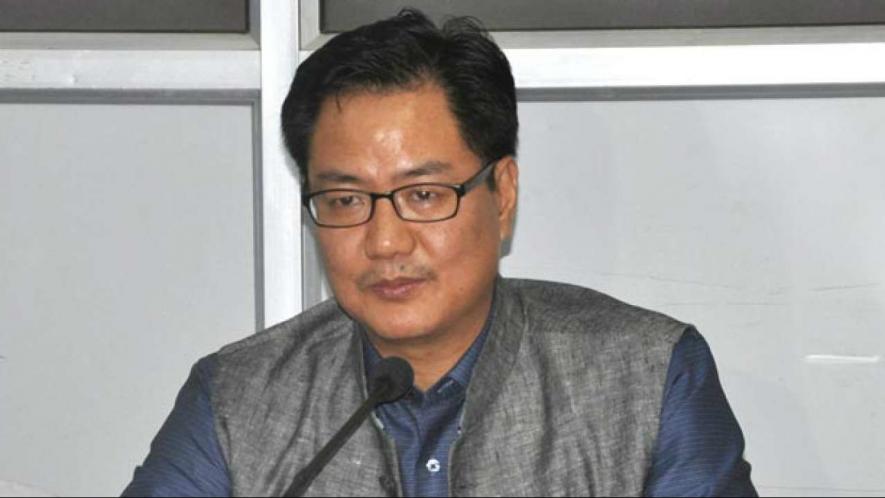Is the Naga Accord Actually 'Almost Finalised'?

Image Courtesy: DNA India
An article in the Indian Express published on Thursday is creating ripples among the Naga people as well as their neighbouring communities across the Northeast. The article claimed that the Naga Accord is almost finalised, only the issues of AFSPA and a separate flag have to be settled. Quoting the interlocutor R. N. Ravi, the article claimed he stated that the solution is near. Referring to unnamed sources, the article also mentioned that the territorial integrity of neighbouring states would not be affected. Minister of State for Home, Kiren Rijiju had earlier made similar pronouncements which evoked a sharply worded response from the National Socialist Council of Nagalim (Isak Muivah) (NSCN(IM)), the main group in talks with the government. At present, the NSCN(IM) has not made any statement regarding the article. However, the contents of it will be deeply scrutinised by all the people of Arunachal Pradesh, Assam, Nagaland, and Manipur.
Surprisingly, according to the Indian Express article, the issues of a flag and AFSPA are the only ones that are yet to be settled. AFSPA technically would have to be revoked, when all the Naga National Political Groups (NNPG) involved sign the accord. By accepting the terms of the accord, the armed wings would automatically have to be disbanded. According to the Indian Express, eligible members of the armed wings would be absorbed into the armed forces, while the rest would receive rehabilitation packages. The issue of a flag is so purely symbolic that it cannot actually be perceived as an issue in any sense. If Karnataka can announce a state flag, why can't Nagaland? The real issue, that the article claims is settled, is over territory and jurisdiction.
The NSCN(IM) claims of 'Greater Nagalim' include parts of Arunachal Pradesh, Assam and Manipur. The article claimed that in Arunachal Pradesh and Manipur autonomous bodies would be set up to govern the Nagas. However, Assam seems to have been exempted. It would appear that the memory of the events in Dima Hasao would serve as a warning. However, Manipur has also seen similar unrest regarding their territorial integrity vis a vis Nagalim. On the other hand, NSCN(IM) has opted to trifurcate Zeliangrong into Zeme, Liangmai and Rongmei. The Rongmei form a sizeable population in Assam's Dima Hasao district. This may be an indication that they have, in fact, relinquished Naga claim over parts of Assam. This move, however, did not go down well with the Zeliangrong, who have vehemently opposed it and has revealed cracks within the Zeliangrong, Liangmai and Rongmei bodies that have stood by the NSCN(IM)'s decision.
What makes this news so surprising is that after over six decades of war, the NSCN(IM) and other factions have opted to give up on sovereignty. To a sceptic, it reeks of a retirement plan. The leadership is old and wants to retire in peace. All the years of war and hardship faced by the Naga people have been forgotten. The war crimes committed by the armed forces under legislation that is, in fact, a declaration of martial law will get swept under the carpet. If the accord is signed on anything less than Nagaland receiving a 'protectorate' status, it is likely that the peace will only be temporary. This is because of the malcontents outside Nagaland. The two emerging groups, NSCN(K) and the Manipur Naga Peoples Front (MNPF) will figuratively fill the space vacated by the decommissioning of the NSCN(IM)'s Naga Army.
Several delegations have been sent to meet the NSCN(K) leadership urging them to join the negotiations. While Khaplang was alive the government was legitimately hesitant to engage in negotiations with him since he was perceived as a citizen of Myanmar. However, the present head, Khango Konyak, hails from the Mon district of Nagaland. At present, none of the delegations has been successful in roping in NSCN(K). Considering that the NSCN(K) still maintains its commitment to the United National Liberation Front of Western Southeast Asia (UNLFW), it is unlikely that they will join any time soon. The MNPF, on the other hand, is vehemently opposed to the NSCN(IM). They claim that the NSCN(IM) has sought to manufacture Naga persecution in Manipur, both with the Kukis and Meiteis. Their stated objective is to restore the cordial relations between the Nagas and the other ethnic groups of Manipur and to establish a sovereign Manipur. However, it is unlikely that they will be very successful in achieving either of the objectives.
A curious aspect of the article is the timing. The Lok Sabha by-election is set for May 28 and the Model Code of Conduct came into force on April 26. Chief Minister Neiphiu Rio had vacated his Lok Sabha seat to contest in the Nagaland assembly elections. At the sidelines of the NITI for the Northeast meeting in Agartala, CM Neiphiu Rio mentioned that the agreement is almost finalised. Ironically statements regarding the accord have a habit of cropping up around elections. The assembly elections were almost derailed by a call for 'solution before election', luckily for the ECI Naga solidarity did not hold. During the Manipur assembly elections, the issue of the Naga agreement cropped up, the BJP stated that the territorial integrity of Manipur would not be affected by it. It would be wiser for the public, to take any announcements regarding the Naga Accord with a pinch of salt, at least until it is published.
Get the latest reports & analysis with people's perspective on Protests, movements & deep analytical videos, discussions of the current affairs in your Telegram app. Subscribe to NewsClick's Telegram channel & get Real-Time updates on stories, as they get published on our website.























